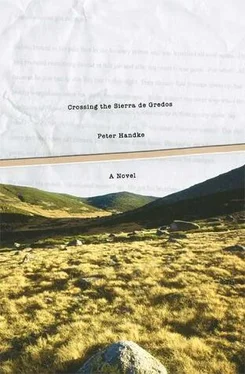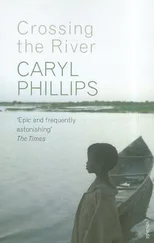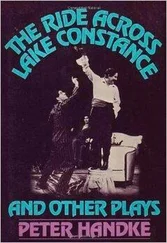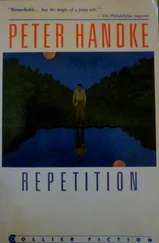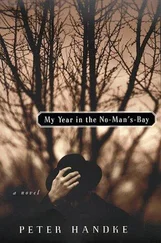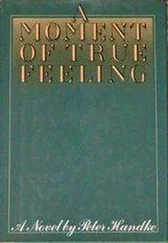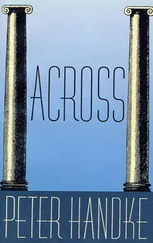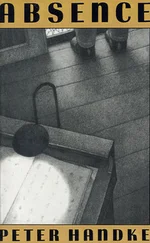The air around her as she headed up the mountain was jolted, ah, how much more sharply and harshly than by the bulls’ horns, by her brother’s “Now I’m going to do it! Now! Now! Now!” And then all that helped was her walking. She walked. She walked with everything she had, with her soles, her kneecaps, her thighs, her vagina (yes), her stomach, her shoulders, with her mouth, nose, and eyes, and with all of them at once; all these things together had to walk, and had to walk together.
She walked with everything at her disposal, her thoughts, her memory, her desire, her will, her intentions. She walked exactly as she worked in her “business,” or had worked. Her way of walking, as a form of averting, bringing to safety, calming, clarifying, gaining perspective, preparing the ground and plowing, went beyond mere walking. Of course it was the movement of someone who had time, much free time, but simultaneously it was a form of action, which, because it includes, according to Adam Smith, John Maynard Keynes, Schumpeter, or also Marx, Lenin, and Kardelj, that special kind of political, moral, and aesthetic action, can render unnecessary all those other overspecialized and thus destructive forms of action (no examples here): walking as comprehensive action — as (topic) stewardship (“of course only in Utopia”): as another invisible hand.
She walked with everything she encountered and came upon, with everything she saw, tasted, heard, and smelled.
And in particular she walked with the images, the images that flew to her from distant times and places in the course of her steady progress up the mountainside, which provided zones of protection and safety and prospects for the future entirely different from memories, thoughts, feelings, and sensory impressions.
These kinds of images assured continuity, and something above and beyond that. They made magic. With this walking, she imagined, and was almost certain, she was saving not only her brother, not only her own blood relative. Wasn’t that one of the reasons for her walking? Ah, keep everything in proportion, otherwise we are lost. She had not been lost for a long time, and the next time it happened, it would be for good. One false step and it would become evident how cut off one was, from everything and everyone.
Walking, healing, organizing, managing: magical walking? So had the foreign woman already been infected by the natives’ atavism? And her repeated deep sighs in the course of her seemingly so light-footed walking? Tahallul , rejoicing; tanassul , sighing.
Dear observer, first of all that need not be a contradiction, and second, this sighing is perhaps merely a family and tribal trait, “typically Sorbian-Oriental,” passed down to the present day from long, long ago. And when she asked the author later whether it wasn’t the same with him during long, steady walks, especially when he was crossing the mountains — all her experiences could only be universal ones — he replied, no, he was familiar with the concept of assuring continuity, keeping alive, lending a hand, in short, of “managing”—instead of setting out to write he actually used the term “setting out to manage” in his mind — solely from his own “doings” now and then, writing down, writing up, writing on, but that was no form of certainty, not even “approximately”—“or was it?”
One was walking up the mountain. (“One?”—One.) Walking was taking place. Walking will have taken place. Like the falcon: when one looked for it, it was no longer, yet still, in the spot where it had been when it had screeched. “Falcon, kite, drop a feather for me.” And it dropped one.
She had distributed the weight she was carrying in such a way that instead of slowing or hindering her walking it gave her a rhythm, like set sails. Thus, carrying in front her knapsack, mochila, michlatuz-zahr , which, as long ago with women travelers, was reminiscent of a bolster, almohada, michada , with the bare necessities and a bit more stuffed into it, and with other bulky items hooked onto her belt, and this thing or that swinging around her hips, she sailed up the Sierra, a solitary seafarer.
On earlier crossings she had sometimes set out without any baggage, with nothing in her hands, nothing to carry, thinking she would be freer and less encumbered that way. But she had soon noticed that the walking, climbing, scrambling, was not any easier as a result but rather the opposite. One needed, one had to have on one’s body, properly balanced loads, but especially the kind that balanced the bearer. They kept one alert, not as snakes did, but similarly, as one groped one’s way through the pathless, trackless waste, alert from top to toe, and thus prevented the sort of precipitous actions that could be fatal, especially to one walking alone; they constituted a sort of armor of mindfulness, guided one and blazed a trail on the middle path, the only viable one, at least in the Sierra, between gravity and free flight.
“Never again,” she had then sworn to herself, “will I hike over the Sierra de Gredos without something suitable on my back and on my tummy”—how could she call her flat, muscular stomach a “tummy”?!
She, the solitary seafarer, all alone far and wide. Astonishing, almost incomprehensible, that there were no others scaling these sky-high heights at the same time, perhaps nicely dispersed across the northern flanks that sloped gently skyward. What in the world was everyone doing? How could they stand moping around at home, down in the lowlands, in those gloomy cities that made them narrow-minded (to say nothing of the contemporary “villages”)? How did it happen that she never ran into a single one of her thousand and three enemies in these remote, lonely, sheltered, quiet, and expansive spaces that generated harmony, but only in places where, with the best will in the world, one could not help remaining enemies?
Why didn’t her mortal enemy (for she had one, or imagined one, as almost everyone did at the time of her story) suddenly appear around a granite cliff, three thousand six hundred miles from Wall Street and the Ginza, and the two of them look at each other wide-eyed, laugh, for the moment completely forgetting or losing track of the fact that they were mortal enemies, and realize they had to hang on to the moment or do something constructive with it?
But it was not actually true that on this day she was walking through the Sierra alone. Soon she saw ahead of her human footprints in the stretches of granite sand that often simulated a path through the broom and juniper thicket, and in the increasingly frequent patches of snow: fresh tracks, as if from that very morning, and not single ones but many, then innumerable ones, close together and behind each other and finally overlapping. Except that she did not get to see the people they belonged to, although she could feel, smell, and taste their presence — did not see them for such a long time that she forgot them again.
One was walking. Walking was taking place. The inimitable sound of the granite sand underfoot, less a crunching than a grinding and rustling of the coarse particles, which at the same time massaged one’s feet: the most prominent walking sound on the Iberian peninsula — even if one might encounter a similar sound during a crossing of the Alps, or in the Andes, or, for all she cared, in the Himalayas (“The highest peaks are not for me,” akin to: “We have no business going into outer space”).
More and more stretches bare of all vegetation, without a bush, without a blade of grass, even without those lichens, an ornamental smear of the most varied yellows, greens, and reds that resembled geographical maps and were also named after them: “geography lichens”; yet also no wastelands of scree and stones, but often glass-smooth, slightly rounded rocky plateaus, polished long ago by the Sierra glaciers, slippery smooth not only where they were snow-covered but just as much in the dry patches.
Читать дальше
